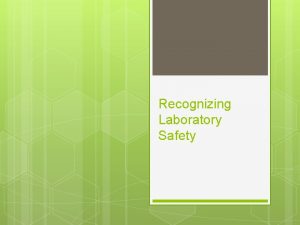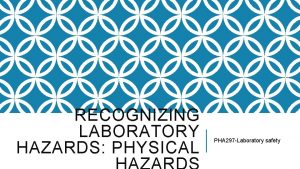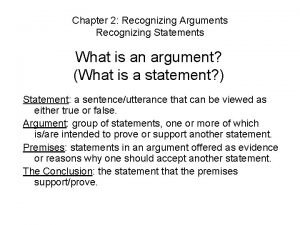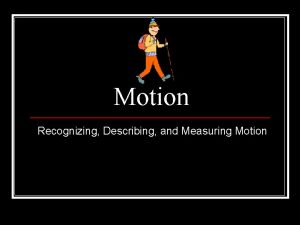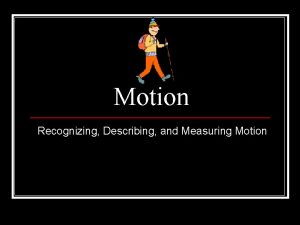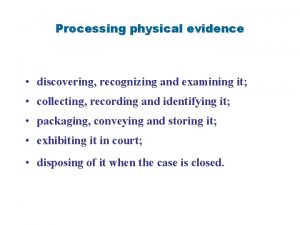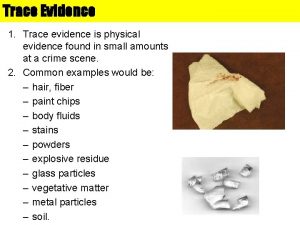PHYSICAL EVIDENCE Physical Evidence Purpose of recognizing physical

















- Slides: 17

PHYSICAL EVIDENCE

Physical Evidence • Purpose of recognizing physical evidence: so it can be collected analyzed. • It is difficult to ascertain the importance of a given piece of evidence in a case, it’s ultimately decision of a jury.

Types of Physical Evidence Blood, semen, and saliva Documents Drugs Explosives Fibers Fingerprints Firearms and ammunition Glass Hair Impressions Organs and physiological fluids Paint Petroleum products Plastic bags Plastic, rubber, and other polymers Powder residues Soil and minerals Tool marks Vehicle lights Wood and other vegetative matter

Purpose of Examining Physical Evidence • Comparison • Identification

A comparison analysis subjects a suspect specimen and a standard/reference sample to the same tests and examinations for the ultimate purpose of determining whether or not they have a common origin. Standard/reference sample: material with a verified and documented source, when compared to evidence from an unknown source, shows an association or link to a suspect, crime scene or victim. Ex. Hairs taken from a victim or a suspect of a crime.

Identification The object of an identification is to determine the physical or chemical identity with as near absolute certainty as existing analytical techniques will permit.

Comparison A comparative analysis has the important role of determining whether or not a suspect specimen and a standard/reference specimen have a common origin. Both the standard/reference and the suspect specimen are subject to the same tests.

A forensic comparison is actually a twostep procedure: 1. Combinations of select properties are chosen from the suspect and the standard/reference specimen for comparison. 2. Once the examination has been completed, the forensic scientist must be prepared to render a conclusion with respect to the origins.

Role of Probability To comprehend the evidential value of a comparison, one must appreciate the role that probability has in ascertaining the origins of two or more specimens. Simply defined, probability is the frequency of occurrence of an event. In flipping a coin, probability is easy to establish.

With many analytical processes exact probability is impossible to define.

Classifying Characteristics Individual Characteristics: Evidence that can be associated to a common source with an extremely high degree of probability is said to possess individual characteristics. Class Characteristics: Evidence associated only with a group is said to have class characteristics.

Individual Characteristics Examples The matching ridge characteristics of two fingerprints The comparison of random striation markings on bullets or tool marks The comparison of irregular and random wear patterns in tire or footwear impressions The comparison of handwriting characteristics The fitting together of the irregular edges of broken objects in the manner of a jigsaw puzzle Matching sequentially-made plastic bags by striation marks running across the bags

Class Characteristics Evidence is said to possess class characteristics when it can be associated only with a group and never with a single source. The high diversity of class evidence in our environment makes their comparison very significant in the context of a criminal investigation. When one is dealing with more than one type of class evidence, their collective presence may lead to an extremely high certainty that they originated from the same source. Finally, the contribution of physical evidence is ultimately determined in the courtroom.

Natural vs. Evidential Limits There are practical limits to the properties and characteristics that the forensic scientist can select for comparison. Ø Modern analytical techniques have become so sophisticated and sensitive that natural variations in objects become almost infinite. Ø Carrying natural variations to the extreme, no two things in this world are alike in every detail. ***Example – latent fingerprints can vary slightly due to the amount of oils and sweat left by the print. While there won’t be new detail there may be voids or smudges in the print. Evidential variations are not the same as natural variations.

Using Physical Evidence As the number of different objects linking an individual to a crime scene increases, so too does the likelihood of that individual’s involvement with the crime. Just as important, a person may be exonerated or excluded from suspicion if physical evidence collected at a crime scene is found to be different from standard/reference samples collected from that subject.

Forensic Databases The Integrated Automated Fingerprint Identification System (IAFIS), a national fingerprint and criminal history system maintained by the FBI. The Combined DNA Index System (CODIS) enables federal, state, and local crime laboratories to exchange and compare DNA profiles electronically. The National Integrated Ballistics Information Network (NIBIN) allows firearm analysts to acquire, digitize, and compare markings made by a firearm on bullets and cartridge casings.

The International Forensic Automotive Paint Data Query (PDQ) database contains chemical and color information pertaining to original automotive paints. SICAR (Shoeprint Image Capture And Retrieval) is a shoeprint database.
 Useful and harmful materials in house
Useful and harmful materials in house Top-down listening strategy is a listener-based strategy.
Top-down listening strategy is a listener-based strategy. Chapter 3 recognizing opportunity
Chapter 3 recognizing opportunity Trends and opportunities examples
Trends and opportunities examples Argumentative text anchor chart
Argumentative text anchor chart Paradigm of the channel design decision example
Paradigm of the channel design decision example Recognizing opportunities and generating ideas
Recognizing opportunities and generating ideas Recognizing lab safety worksheet answers
Recognizing lab safety worksheet answers Entrepreneurial trends
Entrepreneurial trends Recognizing opportunities and generating ideas
Recognizing opportunities and generating ideas Strategy: recognizing cognates
Strategy: recognizing cognates An argumentative essay is a genre of writing that
An argumentative essay is a genre of writing that Chapter 3 recognizing opportunity
Chapter 3 recognizing opportunity Recognizing laboratory safety
Recognizing laboratory safety Recognizing parallel structure
Recognizing parallel structure Whats antecedents
Whats antecedents Recognizing and resolving abo discrepancies
Recognizing and resolving abo discrepancies Recognizing interruptions of health development
Recognizing interruptions of health development







